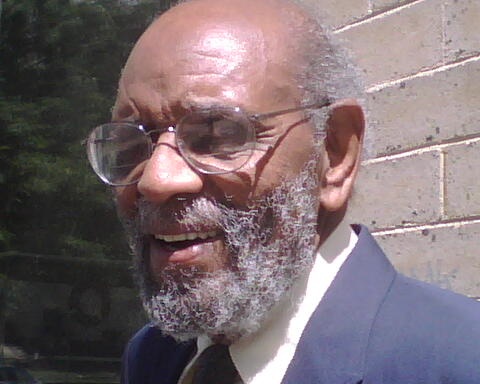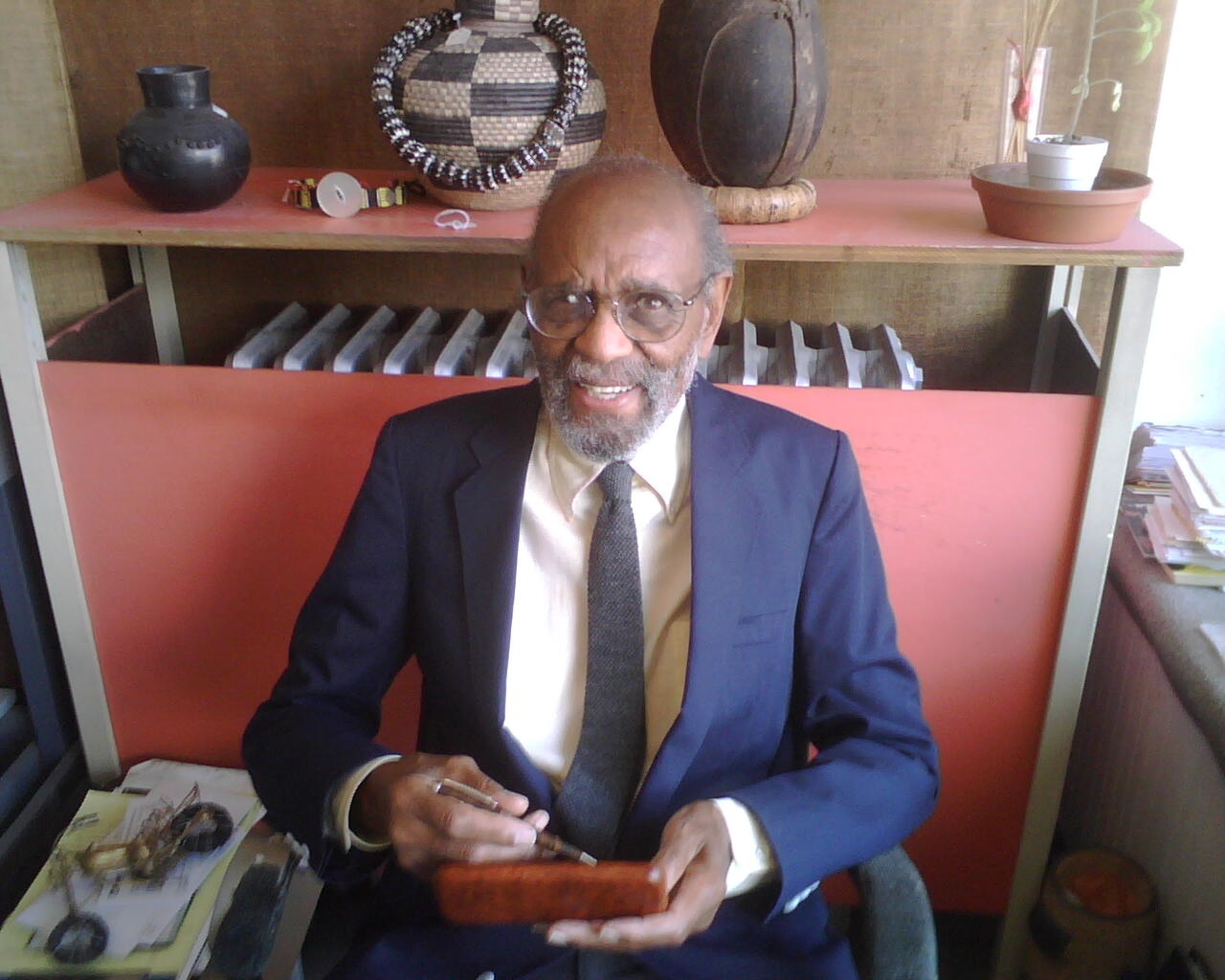By Christina Childrey
Every year for the last 20 years, the Denver Black Arts Festival has celebrated an individual or two, over the age of 60, who have shown excellence in the areas of visual or performing arts. They are given the Louise Duncan award, names after the original award winner who was a shining example of a talented artist and a great woman.
Duncan was born June 7, 1914, in Iola, Kan. At a very early age, she realized being truly passionate about something makes it feel as effortless as breathing and so wonderful that it never gets old. A self-taught pianist, Duncan played with such greats as Duke Ellington, Ella Fitzgerald, Billie Holiday, and Nat King Cole. Although today she may not have reached their level of fame, from the age of 4 until her death in 1990, she spread her love of life and jazz everywhere she played.

This years Louise Duncan award will be presented to John Henderson, Denver’s first licensed African-American architect. When asked how he feels about receiving the award, he humbly said he feels there are others that are more deserving of the honor.
Henderson was born June 15, 1921, in Wichita, Kan. He was such a skinny child, the other kids would call him “old skinny Jr. Henderson.” Early on, he knew he could not do the jobs other kids in his town were doing, such as construction and jobs that were strenuous and physically difficult.
For a little more than two years, Henderson volunteered in the army, which helped shape his life. While working alongside college football players, basketball players, and track athletes, as “Old Skinny Jr.,” Henderson quickly learned he could do things they couldn’t.
“It helped instill in me the possibility that you can do more with who you are, than you realized you can do,” he said.

His mother was a tremendous influence on his life. He remembers fondly when she was seeking maid work and would tell prospective employers, “I charge a dollar a day plus car fare, I don’t wash windows, I don’t scrub floors, and my name is Olympia, so don’t call me girl.”
The GI Bill provided funding for his education, and he went on to get a degree with an English major and a Sociology minor from Friends University, a Christian college, in 1948. During his commencement, the speaker who appeared to be nearly 80 and had many degrees himself, said if there were things he could still do at his age, he would. This idea clicked with Henderson, who had already tried teaching and found it was not the career path for him. After that speech, he decided to pursue what he enjoyed, and in 1952, he graduated from Kansas State University with a degree in architecture.
Henderson tried to get a job in his hometown, but one firm offered him only $1 per hour and other opportunities were limited. With a little help from his wife, Gloria, he decided to get out of Kansas. He applied for jobs all over the country, and was offered a job in Toledo. Before hiring him, though, the employer asked him to send a recent photo, and to this day, Henderson said, “I’m still waiting to hear from someone in Toledo.”
After getting hired in Youngstown and later Akron, Ohio, and living in those towns for a few years, he realized he didn’t like the weather in Ohio, and decided to leave the state.

Henderson had a friend in Denver, who suggested he come visit. On his way to San Francisco, Henderson stopped in Denver, picked the first hotel listed in the phone directory, and stayed there at the old Auditorium Hotel at 14th and Stout. He looked in the phone directory again, this time for jobs. Starting at the bottom of the list of architecture firms, he called the office of James Sudler and was told they did not have any openings but their joint venture across the hall did. Henderson went in for an interview at 8 a.m. on Tuesday morning, and by 8:30 a.m. he had a job with Fisher and Davis & James Sudler Associates. This firm was working on the Federal Courthouse on 19th and Stout, at the time.
Henderson worked with Gio Ponti and James Sudler on early drawings for the Denver Art Museum, and with the Victor Hornbein & Ed White, Jr. firm that worked on the Botanical Garden structures. After looking at nearly 30 homes in Denver during the mid-1960s, and finding nothing that completely satisfied him and his wife, Henderson decided to design his own, very modern home with wood floors and lots of glass. When they were first building the house, he said, the neighborhood kids thought it was going to be an ice cream shop.
Henderson’s style is influenced by his favorite architect, German emigrant Ludwig Mies van der Rohe, who has been referred to as one of the leading pioneers of modern architecture. Though the German architect went into private practice before Henderson ever had the chance to study with him, Henderson picked up on his flair for using modern materials and designs.
Eventually, Henderson went on to work as an architect with the Bureau of Indian Affairs for over 16 years, working on various projects until he retired in 1981. He has continued to work and owns the African American Trading Co. at 21st and York Street, where he enjoys talking to and learning from people who pass through. The small, somewhat obscure shop attracts many visitors, often artists and architects themselves, who stop in and enjoy Henderson’s company.

Henderson traveled all over the world to places such as Uruguay, Japan, Hong Kong, Scandinavia, Spain, Belgium, and Finland. He learned in the process of traveling that people don’t know where in the world you are from until you open your mouth, and to be more appreciative of what we have in this country. The award winner and renowned architectural artist feels young people today need to think about and prepare for their future, not just living for the next day. They need to know that there are more opportunities out there than just the NFL and the NBA, he said.
Return To Top
20 Years Of Artistic Recognition
At
Denver Black Arts Festival
The Louise Duncan Lifetime Achievement Awards are presented annually at the Denver Black Arts Festival, to people who have achieved a lifetime of visual or performing arts excellence which has contributed greatly to the community. The awardees are:
Marguerite Baker ─ Dancer
Edward R. Battle ─ Vocalist
Charlie Burrell ─ Musician
Charlotte Cowens ─ Musician
Joyce Marie Davis ─ Musician
Jesse Dubois ─ Sculptor/Painter
Louise Duncan ─ Pianist
John Henderson – Architect
Lula Jacobs ─ Painter
Adetunji Joda ─ Dancer
Ernestine McClain-Smith ─ Dancer
George Morrison Sr. ─ Musician
Oyedele Oginga ─ Musician/Visual Artist
Jonathan Parker ─ Theater
Shelly Rhym ─ Musician
Dr. Cornelius Stripling ─ Photographer
Claudette Sweet ─ Vocalists
Billy Tolles ─ Vocalist/Musician
J.C. Tunson ─ Sculptor
Lucy Walker ─ Theater
Mildred Walters ─ Author
Robert White ─ Musician
Letitia Williams ─ Dancer
Nate Yarbrough ─ Musician
Return To Top |
